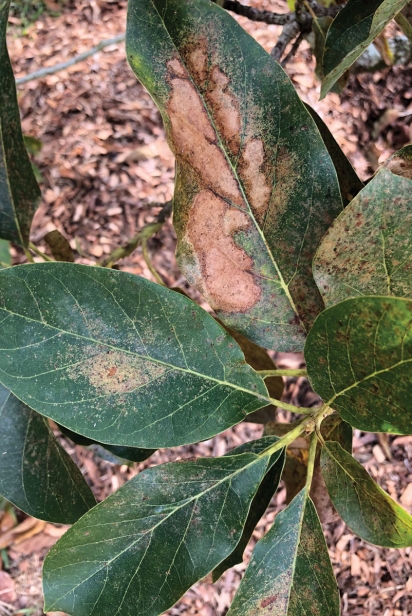The Art of Reading the Leaves
As a horticulturist, I use leaves to tell me about the health of a plant. Since plants can’t tell us what’s wrong, you have to read the signs to make sure they’re doing their very best.
Pest damage
Almost always found on the leaves, pest damage presents itself in different ways. It can be in the form of sooty mold, caused by the feeding of aphids or scales. If you see sooty mold, chances are high you have aphids or scale. If the leaves are eaten from the outside in, your plants are most likely being eaten by caterpillars. If the leaves have holes in them, you probably have a snail problem. Some insect damage is very specific to different fruit species, such as the avocado lace bug or the lychee erinose mite.
Pathogens
Fungi, bacteria and viruses all present themselves differently on leaves. Fungal problems show up as round, oval or irregular necrotic areas, mildews or rusts. Bacteria symptoms could be an ooze, leaf spot, yellow haloing around lesions, or water-soaked lesions. Virus symptoms can be a mosaic leaf pattern, or crinkled or yellow leaves. Often hard to tell apart, these different symptoms may be easier to diagnose using a hand lens.
Nutrient Deficiencies
Macro elements such as nitrogen, phosphorus and potassium show deficiencies on both old and new leaves, while micro elements such as iron, boron and zinc show deficiencies primarily on the new leaves. In a classic iron deficiency sign, the veins of a new leaf are green, but the rest of the leaf is yellow (top photo).
Wilting
Except for dry soil, wilted leaves are your best window into whether or not a plant needs water. If you don’t water your plant in short order, damage can occur. Leaves may show dead spots or the plant may even die.
Normal Abscission
Sometimes leaves look bad just because they are about to fall off. Avocado leaves drop in droves at the end of the winter and annona leaves look terrible before the plant becomes bare and prepares to put out new leaves.









